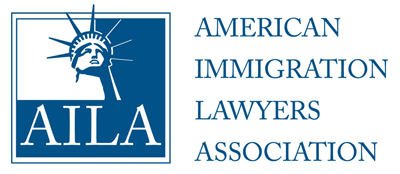Marriage-Based Immigration: The I-130 And I-485 Confusion

The I-130 and I-485 is a daunting process for husbands and wives going through a Marriage-Based Immigration Process. Apart from the forms being numerous pages long, the instructions for the two forms seem to confuse the entire process even further.
For instance, the I-130 is considered the Petition for an Immediate Relative, and some would think that this form is all that would be needed. Sadly, the I-130 is only the beginning point. Apart from a petition, a sponsor would also need an I-130A* (a supplemental information form), an I-864 ( affidavit of support ), and a G-1145 (highly preferred electronic notification). The I-864 is another daunting process because it requires many supporting documents of your finances and tax records. Unfortunately, what you attach to this form is pivotal and should be done the best way possible.
The I-130 petition is simply asking the government to do something, but its process can lead many astray. As for the I-485, this process is similar to the I-130, but concerns the eligibility of the immigrant / beneficiary of the petition.
Now, the I-130 and I-485 has a fundamental vagueness, being when each should be filed. From an immigration attorney’s standpoint, if the immigrant’s eligibility is immediate, then filing both forms jointly would be highly preferred. However, two issues then arise: (1) how someone is to know whether their eligibility is immediate; and (2) which form is filed first.
First, for a legal answer, an immigrant has immediate eligibility for marriage-based immigration if the immigrant can process the forms without other requirements. For a clearer answer, an immigrant’s eligibility can be found on their visa and the category they are processing through. Generally, a visa is eligible when occurring through marriage-based immigration with a U.S. Citizen. However, visas like the J Visa generally have Home Residency Requirements that impose a restriction on eligibility. (See relevant post here ). However, generally, if the immigrant marries a U.S. Citizen, the eligibility is immediate. If you are unsure about eligibility, you should speak with a local immigration attorney. Guessing may be costly and could place someone in deportation court.
Second, an I-130 should be either (1) filed simultaneously with the I-485, if the eligibility is immediately available; (2) filed first, approved, and then the I-485 is filed; or (3) filed first, pending, and if immediate eligibility is acquired while pending, the I-485 should be filed. As a side note, filing simultaneously the I-130 and I-485 may make the processing time quicker, even as little as 3 to 8 months. However, if the I-130 and I-485 are filed separately, the processing time could be as little as 10 months, but it usually lasts as long as 2 years.
ABOUT OUR IMMIGRATION LAW FIRM:
Fickey Martinez Law Firm, P.L.L.C. is an immigration and naturalization law firm serving Eastern North Carolina. We strive to make sure you understand the immigration laws that pertain to your specific circumstances. We frequently file with USCIS, NVC and DOS, and we can use this experience to better serve you.
If you have any questions or concerns, please feel free to call Fickey Martinez Law Firm at (910) 526-0066, email us at attorney@fickeymartinezlaw.com , or explore our website at www.fickeymartinezlaw.com.
Related Blog Posts:
Disclaimer: This Blog is made available by the lawyer or law firm publisher for educational purposes only as well as to give you general information and a general understanding of the law, not to provide specific legal advice. By using this blog site you understand that there is no attorney-client relationship between you and the Blog/Web Site publisher. The Blog should not be used as a substitute for competent legal advice from a licensed professional attorney in your state.
The post Marriage-Based Immigration: The I-130 And I-485 Confusion appeared first on Fickey Martinez Law Firm.












